50+ Sample Retreat Schedules
-
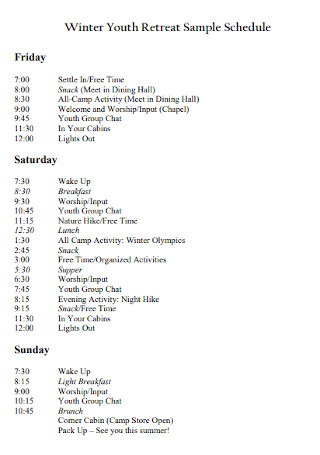
Winter Youth Retreat Schedule
download now -
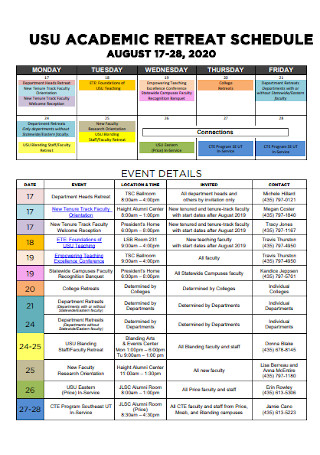
Academic Retreat Schedule
download now -

Sample Retreat Day Schedule
download now -
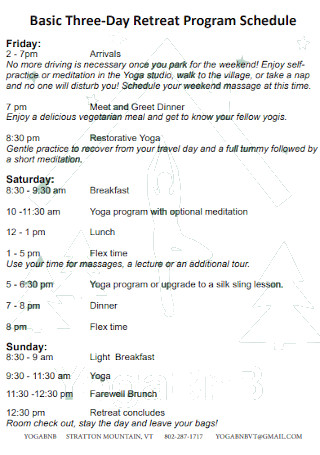
Three-Day Retreat Program Schedule
download now -
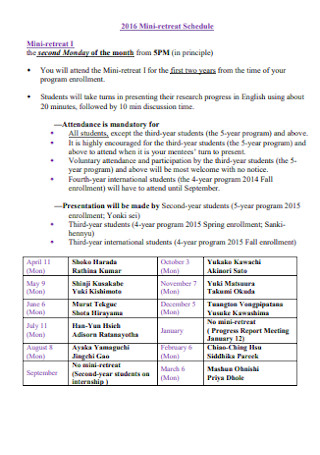
Mini-retreat Schedule
download now -
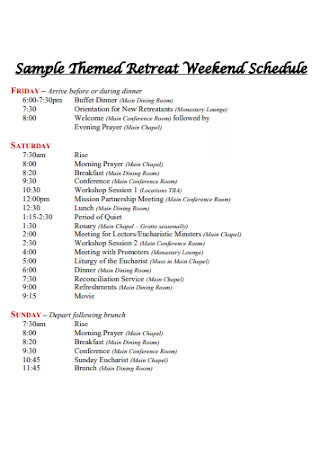
Retreat Weekend Schedule
download now -
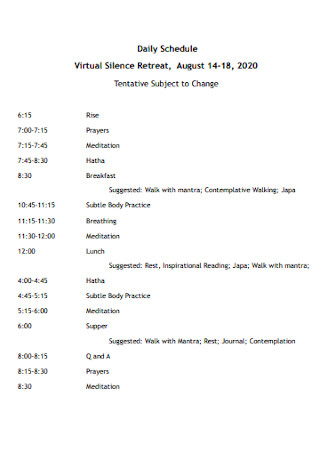
Retreat Daily Schedule Template
download now -
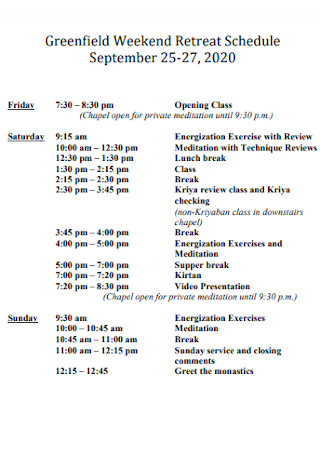
Weekend Retreat Schedule
download now -
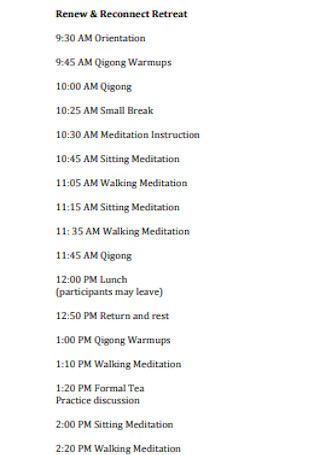
Reconnect Retreat Schedule
download now -
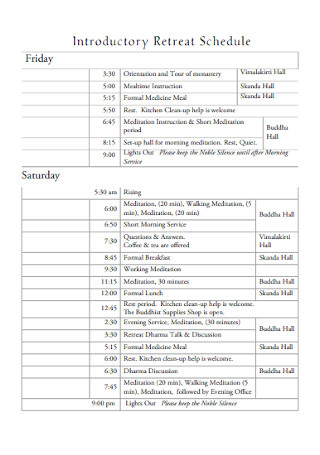
Introductory Retreat Schedule
download now -
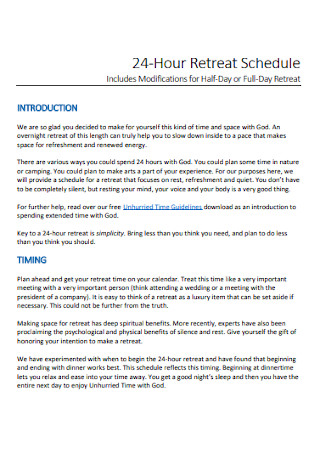
24-Hour Retreat Schedule
download now -

Typical Weekend Retreat Schedule
download now -
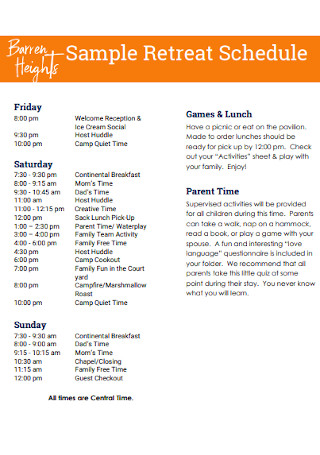
Sample Retreat Schedule
download now -
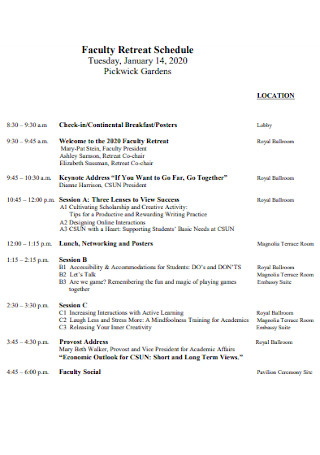
Faculty Retreat Schedule
download now -
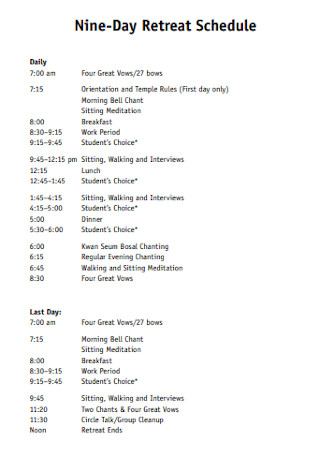
Nine-Day Retreat Schedule
download now -

Family Retreat Schedule
download now -

New Faculty Retreat Schedule
download now -
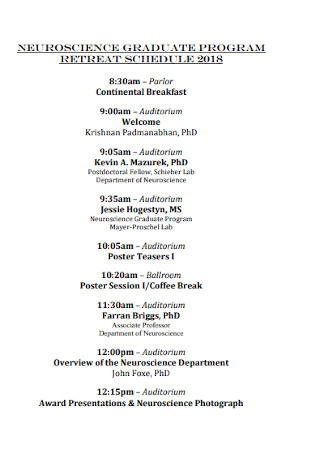
Program Retreat Schedule
download now -
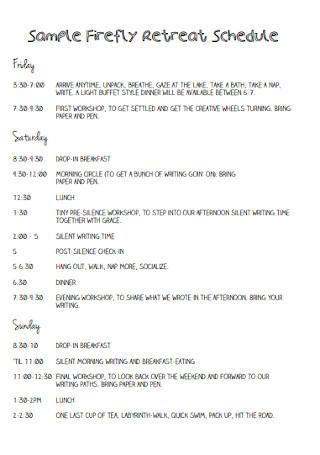
Sample Firefly Retreat Schedule
download now -
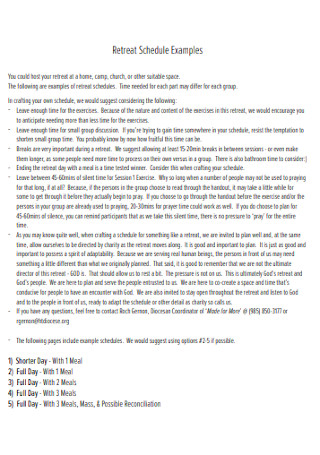
Retreat Schedule Examples
download now -
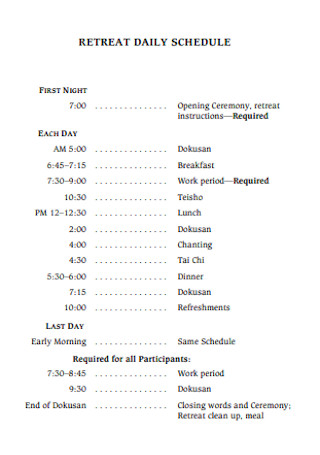
Retreat Daily Schedule Example
download now -
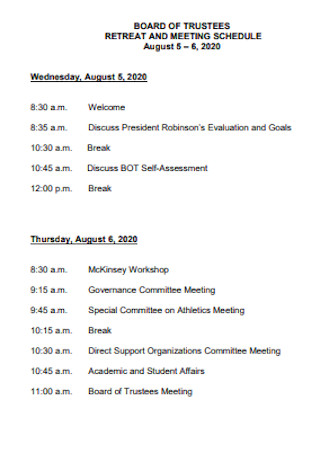
Retreat Meeting Schedule Template
download now -
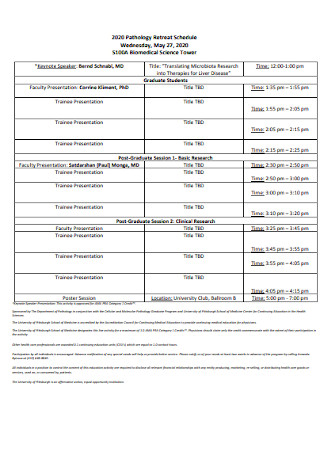
Pathology Retreat Schedule
download now -
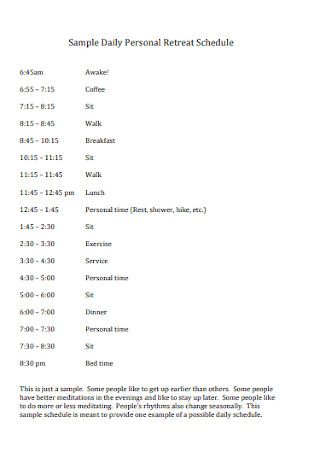
Sample Daily Personal Retreat Schedule
download now -
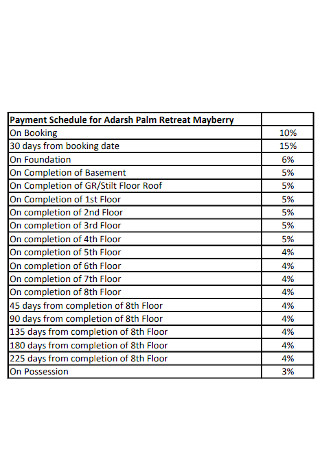
Payment Schedule for Palm Retreat
download now -
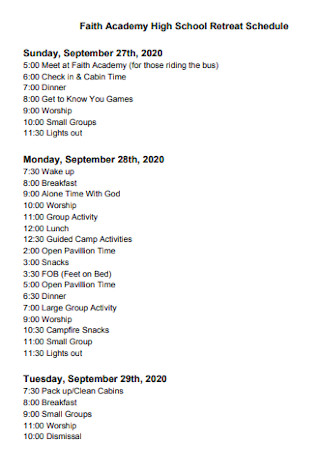
High School Retreat Schedule
download now -
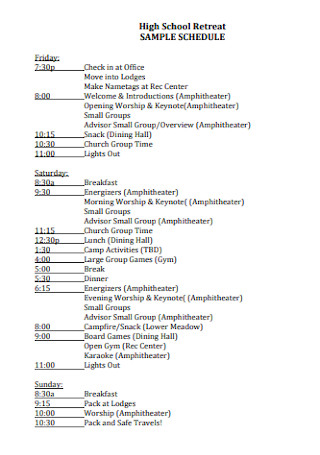
Sample High School Retreat Schedule
download now -
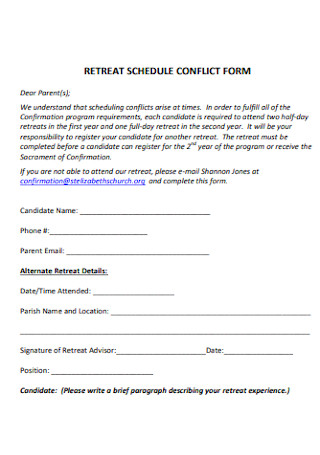
Retreat Schedule Conflict Form
download now -
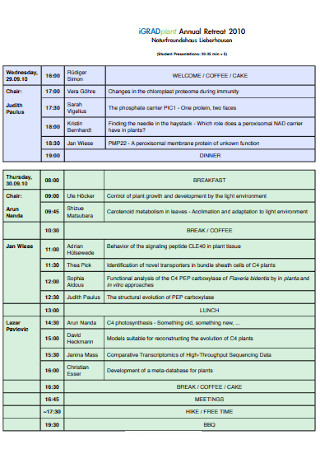
Annual Retreat Schedule Template
download now -
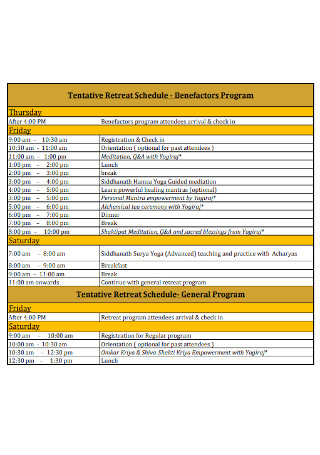
Tentative Retreat Schedule
download now -
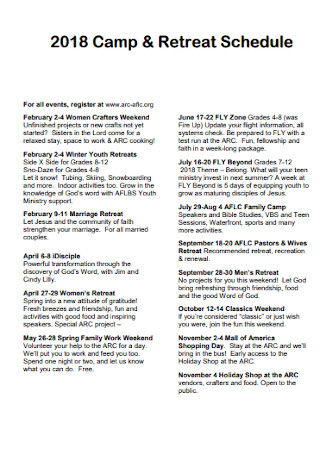
Camp and Retreat Schedule
download now -
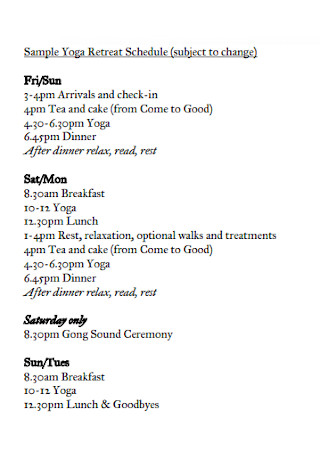
Sample Yoga Retreat Schedule
download now -
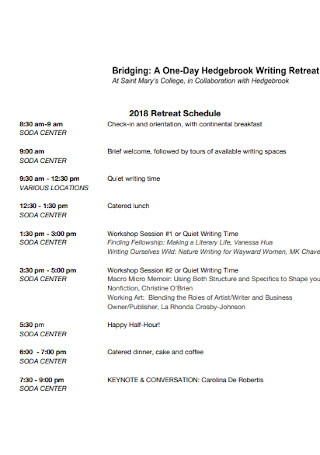
Bridging Retreat Schedule
download now -
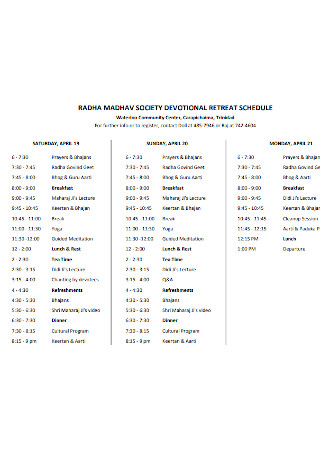
Scociety Devotional Retreat Schedule
download now -
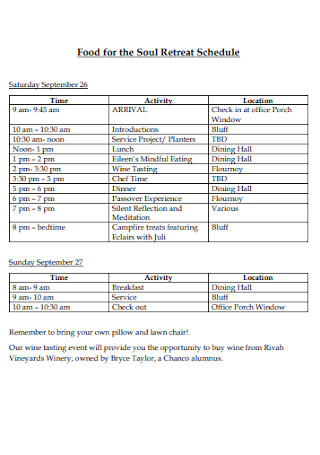
Food for Soul Retreat Schedule
download now -
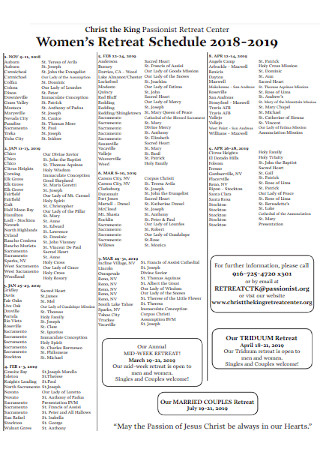
Womens Retreat Schedule
download now -
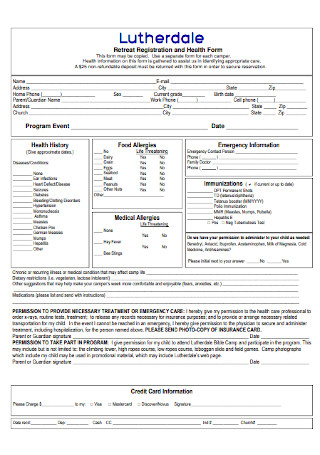
Retreat Registration Schedule Form
download now -
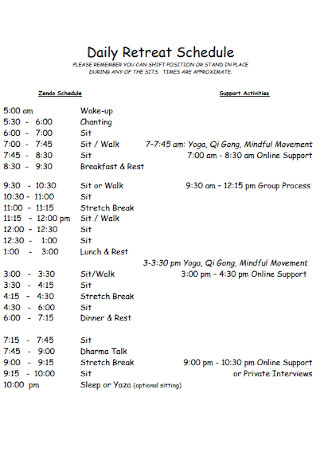
Daily Retreat Schedule
download now -

Source and Summit Retreat Schedule
download now -
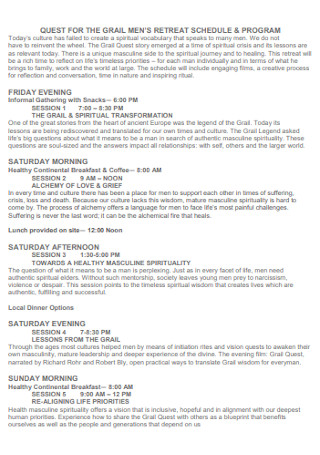
Grail Mens Retreat Schedule
download now -

Preteen Daughter Retreat Schedule
download now -
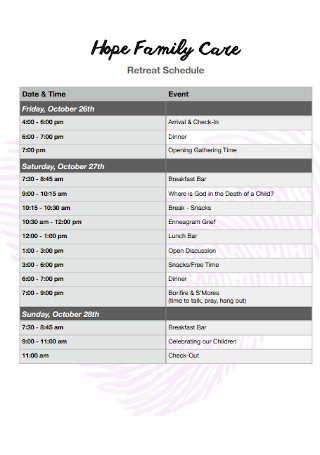
Family Care Retreat Schedule
download now -
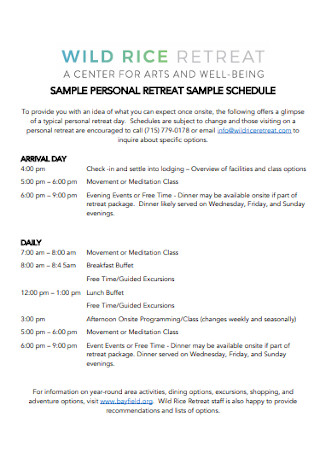
Sample Personal Retreat Schedule
download now -
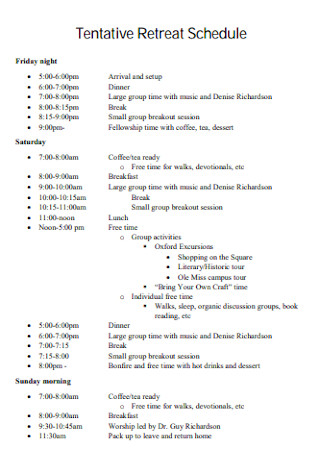
Tentative Retreat Schedule Template
download now -
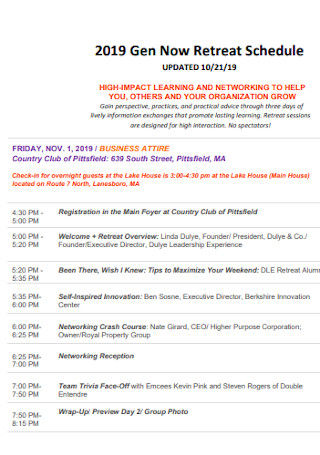
Gen Now Retreat Schedule
download now -

Plant Sciences Retreat Schedule
download now -
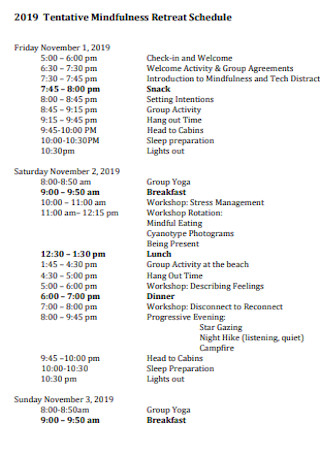
Tentative Mindfulness Retreat Schedule
download now -

Retreat Packing List Schedule
download now -
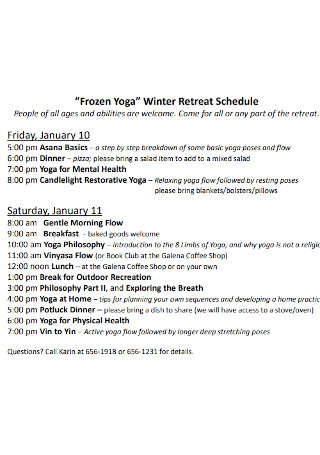
Winter Retreat Schedule
download now -
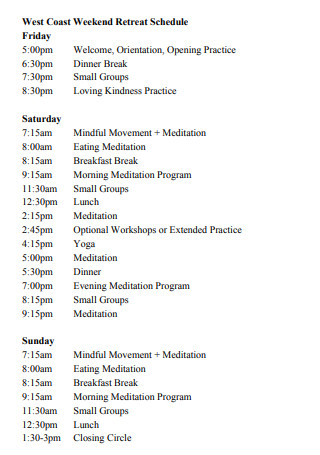
West Coast Weekend Retreat Schedule
download now -
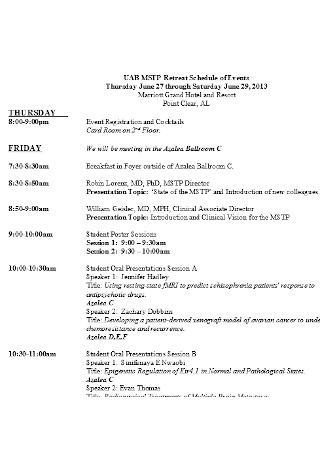
Retreat Schedule of Events
download now
FREE Retreat Schedule s to Download
50+ Sample Retreat Schedules
What Is a Retreat Schedule?
Why Should You Consider a Retreat Schedule?
The Components of a Basic Retreat Schedule
How to Build an Exemplary Retreat Schedule
FAQs
What are fun activities to add to a team-building retreat?
What are some activities to do in spiritual wellness retreats?
What is an online retreat?
What Is a Retreat Schedule?
A retreat is when you take a break from your daily schedule of activities and be somewhere away from your usual work environment. Retreats range according to purpose since you may opt for loads of examples such as a youth retreat, spiritual retreat, wellness retreat, yoga retreat, board retreat, corporate retreat, and leadership retreat. And a retreat schedule is when you incorporate the timeline of what is expected to happen in a retreat from start to finish. Much like an itinerary, retreat schedules are used as the basis of what should follow in a retreat without having to waste time.
According to Statista’s spring 2017 research survey, 68% of American respondents were huge fans of nature retreats.
Why Should You Consider a Retreat Schedule?
Planning a retreat is a good idea but why should there be a retreat schedule in the process? In this segment, understand the underlying reasons why retreat schedules are important.
Promises an Organized Retreat
A retreat schedule helps in organizing your whole retreat plan. Just like in a business plan, it would not be effective without the complete timeframe of when to actually work on the proposed plan. Scheduling is naturally part of the process to have everything planned out. A common application is when you arrange the retreat activities chronologically.
Promotes a Timely Retreat
Retreat schedules make sure you are right on track with the retreat rather than being late or missing deadlines. Both the retreat plan and schedule will be prepared ahead in the first place. And they both exist to ensure no time will be wasted during the retreat. So you can surely rely on the retreat schedule to be productive. Indeed, retreats can be a sort of vacation plan for people but not doing anything at all means the retreat’s purpose wasn’t met.
Schedule as a Reference
No forgetful retreat planner has to suffer with a reliable retreat schedule on hand. The schedule itself marks your official reference document in case you forget any detail from the retreat. For example, you might forget what happens after the retreat’s opening remarks. Thus, you just view the schedule and you are back on track
Guarantees a Flexible Schedule
Committing to a retreat schedule is standard. But what you should know is that these schedules also contain plan B, emergency plans, or substitute plans. Hence, it is not all about one linear schedule. Schedules are subjected to change from time to time so at least these extra schedules are available to ensure the retreat won’t be obstructed no matter what happens.
Retreat Itself Is Home to Many Benefits
While plans and schedules make retreats run successfully, it is all for the sake of how retreat itself provides different advantages. A retreat can give you a break from your typical work schedule, a re-evaluated sense of purpose, reconnection with nature, professional guidance, and other benefits that would depend on what type of retreat you are involved in.
The Components of a Basic Retreat Schedule
It is common sense that a retreat schedule enlists the timeframe of what happens in a retreat, but it actually contains more than that. So what are the complete details expected in a standard retreat schedule? Retreat schedules dominantly have these components:
How to Build an Exemplary Retreat Schedule
A lot of considerations are involved in a retreat plan such as the retreat costs, meal plans, venue rentals, number of participants, and so much more. And the same thing applies to your retreat schedule where you should not take its details for granted. A single flaw could affect the success rate of your retreat. Thankfully, you can perfect your retreat schedule easily using these important steps:
-
Step 1: Set Your Retreat Goals and Plans
Don’t make a retreat schedule without full knowledge about the retreat plan and its objectives yet. Setting goals is crucial to make it easier in planning and scheduling later on. For example, why would you add a random yoga session to your schedule if the retreat’s purpose is for a church event retreat? WIth full background on the objectives, you can identify what specific activities are worth adding to the whole schedule.
-
Step 2: Download a Sample Retreat Schedule Template
Every retreat sample schedule you need is available here on Sample.net. With a premade template on hand, you can create retreat schedules quickly and easily. Working from scratch will only make the process long. Get inspiration from over 50+ sample retreat schedules for your wellness retreat, spiritual retreat, camping retreat, and more. Also, each sample is editable so you can freely change the format, content, and design anytime.
-
Step 3: Complete the Retreat Schedule Components
From the title, statement of purpose, down to the notes section, complete what makes a basic retreat schedule, as discussed before. Label your schedule accordingly as to which part enlists the activities and even where the specific timeframe of activities is. You can also add more components that you think can help your retreat schedule. An example is to add checkboxes or blanks, like to-do lists. That way, you can check every single item in the schedule as you do them.
-
Step 4: Use the Appropriate Visual Organizer
Retreat schedules don’t have to be written in essay form. It is more on enumerating, classifying, and presenting data. So you can surely add graphs, timeline charts, tables, and other graphic organizers so the entire schedule is easy to follow. An example is to put a table with the timeframe in the left row section while the top columns are for the days of the week. Then, each box inside will be where you put the activities per day and it will be arranged according to the timeline.
-
Step 5: Be Detailed yet Specific
Much like a meeting agenda, a lot can be discussed and done in retreat. So in writing the retreat schedule, be careful in adding the details. It doesn’t have to be too long since it should be short and direct to the point. That way, less confusion takes place. The key is to balance that you placed the right amount of details but are specific and relevant only. You may need to talk with the retreat organizers for advice or discuss with the participants to consider their preferences in the schedule as well.
-
Step 6: Prepare a Plan B
Substitute plans are highly important. The schedule may change due to a storm, participants getting busy schedules, and other possible factors. So don’t rely on one plan for the retreat schedule. For example, a retreat could be obstructed due to the rising number of COVID-19 cases. Thus, you can either reschedule or provide virtual retreat ideas instead. Also, don’t forget to fact-check your work as mistakes can happen anytime. Maybe you were planning an annual retreat but the formula you used for the schedule was for a weekly retreat. Prevent such errors with an evaluation.
FAQs
What are fun activities to add to a team-building retreat?
You can add ice-breaker games, good food, hiking, a campfire, an open forum, and more. Also, don’t forget to leave extra time for free time. You can ask for more ideas from peers too.
What are some activities to do in spiritual wellness retreats?
Spiritual wellness retreats could use meditation, yoga, praying, journaling, talking about life experiences, and simply spending time with nature.
What is an online retreat?
An online or virtual retreat is kind of how you describe online courses in general, except it has that retreat agenda wherein interactions and shared experiences are part of the session.
It is wrong to say that there is only one way to make the correct retreat schedule. If retreats could cover a church retreat, school retreat, or business retreat, then the scheduling and activities will differ too. And you can personalize our collection sample retreat schedule templates so it really fits your retreat needs, standards, and goals. Download a template now!
